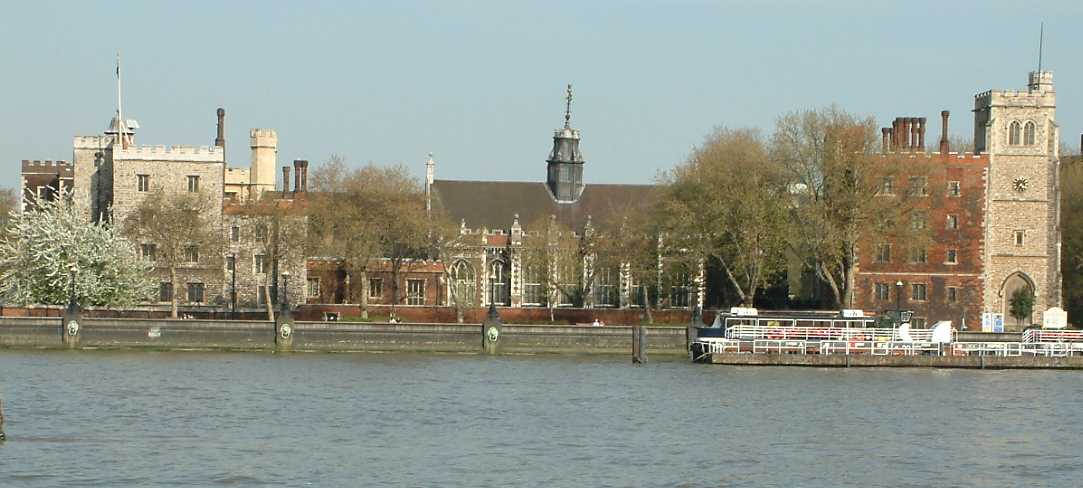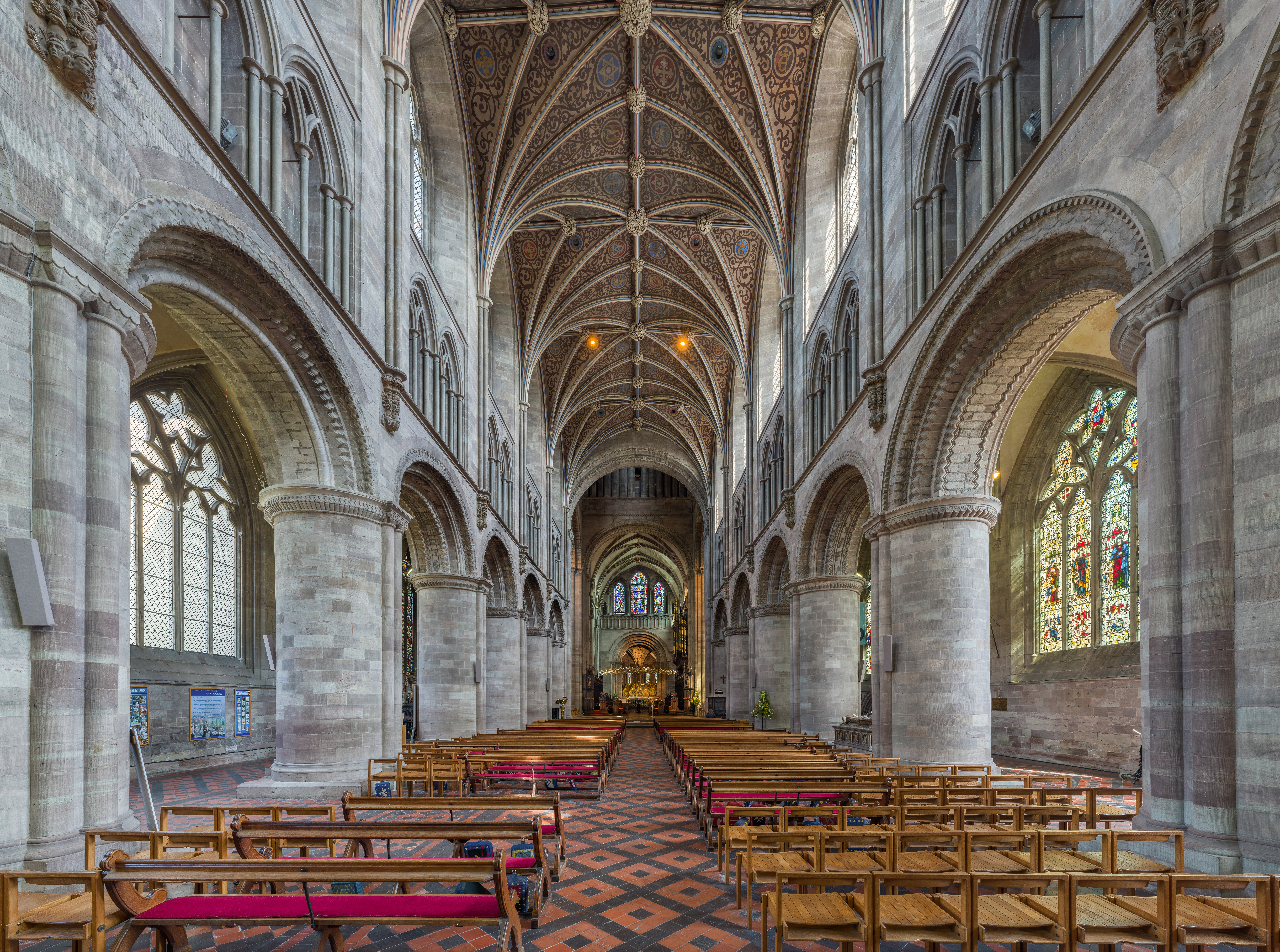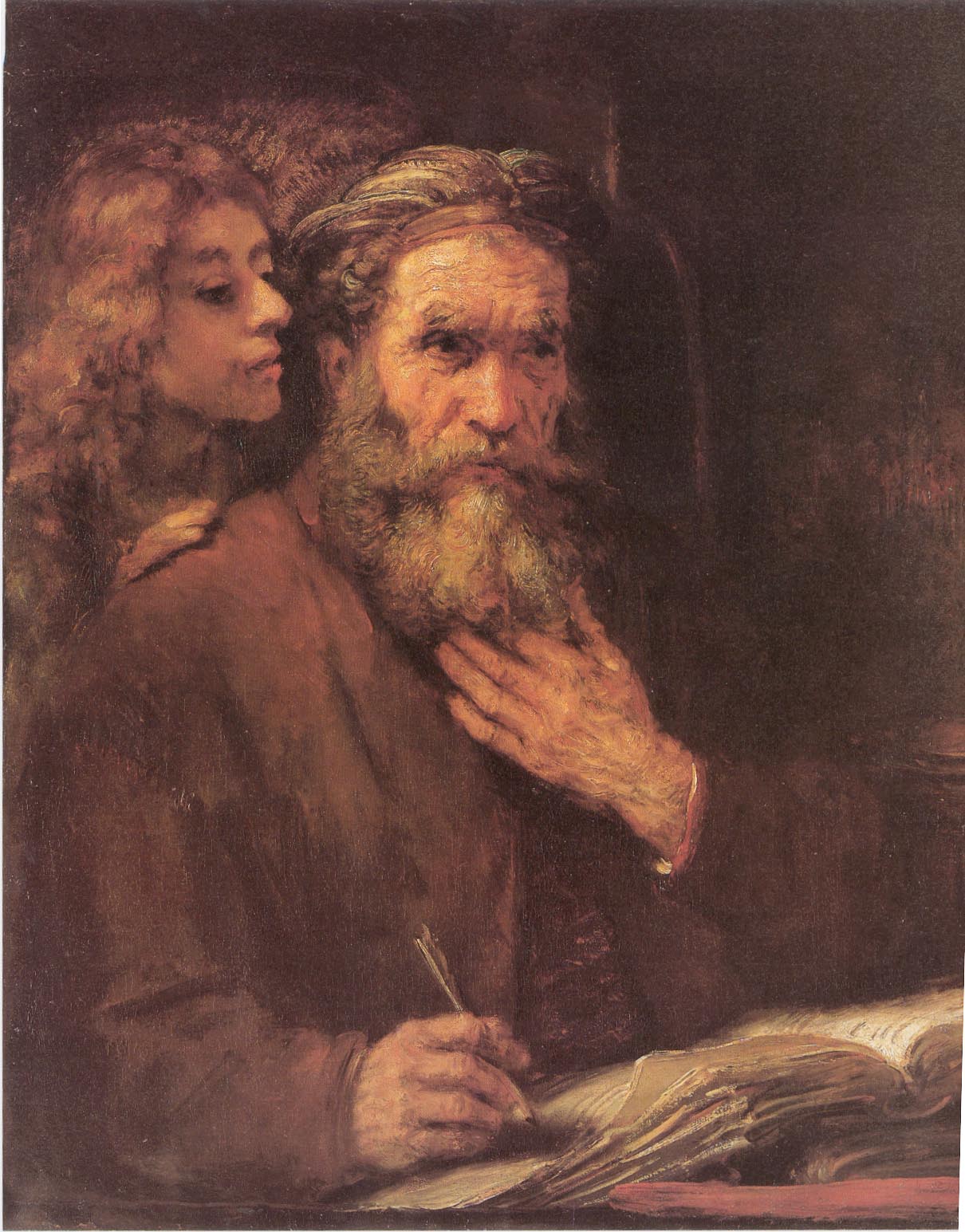|
Michael Alexander (bishop)
Michael Solomon Alexander (1 May 1799 – 23 November 1845) was the first Anglican Bishop in Jerusalem. Life He was the second son and one of five children born to Alexander Wolff. His ancestors may have come to Prussia from England, or may have been in Schönlanke for many generations. His education in the Talmud began when he was seven years old, and from age sixteen to twenty, he was a teacher in his community of both Talmud and the German language. He emigrated to England in about 1820, and became a private tutor for a Jewish family in Colchester. Then he became rabbi at Norwich. Here he came into contact with William Marsh, a stalwart of the ''London Society for Promoting Christianity Amongst the Jews'' (now known as the Church's Ministry Among Jewish People or CMJ). Attempting to flee Christian influences, he accepted the post of teacher and shochet at Plymouth. He taught Hebrew to the Rev. Benjamin Golding of Stonehouse church. In 1825, he converted to Christian ... [...More Info...] [...Related Items...] OR: [Wikipedia] [Google] [Baidu] |
Anglican Bishop In Jerusalem
The Anglican Diocese of Jerusalem ( ar, أبرشية القدس الأنغليكانية) is the Anglican jurisdiction for Israel, the Palestinian territories, Jordan, Syria and Lebanon. It is a part of the Episcopal Church in Jerusalem and the Middle East, and has diocesan offices at St. George's Cathedral, Jerusalem. Today, Anglicans constitute a large portion of Jerusalem's Christians. The diocese has a membership of around 7,000 people, with 35 service institutions, 29 parishes, 1500 employees, 200 hospital beds, and 6,000 students. The bishop of the diocese was styled Bishop in Jerusalem from 1976 until 2014 and from 1841 until 1957, and since then has been styled Archbishop in Jerusalem, as he was between 1957 and 1976. History The Evangelical Revival and the Restoration of Israel The Evangelical Revival of the early nineteenth century began in contrast to the "saucy rationalism" of the 18th century: the "atheistic" French revolution providing a convincing argument for ... [...More Info...] [...Related Items...] OR: [Wikipedia] [Google] [Baidu] |
Dublin
Dublin (; , or ) is the capital and largest city of Ireland. On a bay at the mouth of the River Liffey, it is in the province of Leinster, bordered on the south by the Dublin Mountains, a part of the Wicklow Mountains range. At the 2016 census it had a population of 1,173,179, while the preliminary results of the 2022 census recorded that County Dublin as a whole had a population of 1,450,701, and that the population of the Greater Dublin Area was over 2 million, or roughly 40% of the Republic of Ireland's total population. A settlement was established in the area by the Gaels during or before the 7th century, followed by the Vikings. As the Kingdom of Dublin grew, it became Ireland's principal settlement by the 12th century Anglo-Norman invasion of Ireland. The city expanded rapidly from the 17th century and was briefly the second largest in the British Empire and sixth largest in Western Europe after the Acts of Union in 1800. Following independence in 1922, ... [...More Info...] [...Related Items...] OR: [Wikipedia] [Google] [Baidu] |
Roman Catholic Church
The Catholic Church, also known as the Roman Catholic Church, is the largest Christian church, with 1.3 billion baptized Catholics worldwide . It is among the world's oldest and largest international institutions, and has played a prominent role in the history and development of Western civilization. O'Collins, p. v (preface). The church consists of 24 ''sui iuris'' churches, including the Latin Church and 23 Eastern Catholic Churches, which comprise almost 3,500 dioceses and eparchies located around the world. The pope, who is the bishop of Rome, is the chief pastor of the church. The bishopric of Rome, known as the Holy See, is the central governing authority of the church. The administrative body of the Holy See, the Roman Curia, has its principal offices in Vatican City, a small enclave of the Italian city of Rome, of which the pope is head of state. The core beliefs of Catholicism are found in the Nicene Creed. The Catholic Church teaches that it is t ... [...More Info...] [...Related Items...] OR: [Wikipedia] [Google] [Baidu] |
John Nicolayson
Hans Nicolajsen, known as John Nicolayson (1803 in Løgumkloster – 1856 in Jerusalem) was a Danish missionary to Palestine for the London Society for Promoting Christianity Among the Jews. He was in effect the first representative of the British Christian mission to Jews in Palestine.Yaron Perry ''British mission to the Jews in nineteenth-century Palestine'' 2003 p22 He was one of those who appealed against the Damascus affair, and was founder of Christ Church, Jerusalem, and Mount Zion Cemetery, Jerusalem The Protestant Mount Zion Cemetery (a.k.a., Jerusalem Mount Zion Protestant Cemetery, german: link=no, Zionsfriedhof; he, בית הקברות הפרוטסטנטי בהר ציון) on Mount Zion in Jerusalem, is a cemetery owned by the Anglic ... as predecessor of Michael Alexander (bishop). References Danish Anglican missionaries 1803 births 1856 deaths Burials at Mount Zion (Protestant) Anglican missionaries in Palestine (region) Anglican missionaries ... [...More Info...] [...Related Items...] OR: [Wikipedia] [Google] [Baidu] |
Lambeth Palace
Lambeth Palace is the official London residence of the Archbishop of Canterbury. It is situated in north Lambeth, London, on the south bank of the River Thames, south-east of the Palace of Westminster, which houses Parliament, on the opposite bank. History While the original residence of the Archbishop of Canterbury was in his episcopal see, Canterbury, Kent, a site originally called the Manor of Lambeth or Lambeth House was acquired by the diocese around AD 1200 and has since served as the archbishop's London residence. The site is bounded by Lambeth Palace Road to the west and Lambeth Road to the south, but unlike all surrounding land is excluded from the parish of North Lambeth. The garden park is listed and resembles Archbishop's Park, a neighbouring public park; however, it was a larger area with a notable orchard until the early 19th century. The former church in front of its entrance has been converted to the Garden Museum. The south bank of the Thames along ... [...More Info...] [...Related Items...] OR: [Wikipedia] [Google] [Baidu] |
Ordained
Ordination is the process by which individuals are consecrated, that is, set apart and elevated from the laity class to the clergy, who are thus then authorized (usually by the denominational hierarchy composed of other clergy) to perform various religious rites and ceremonies. The process and ceremonies of ordination vary by religion and denomination. One who is in preparation for, or who is undergoing the process of ordination is sometimes called an ordinand. The liturgy used at an ordination is sometimes referred to as an ordination. Christianity Roman Catholic, Orthodox, Lutheran and Anglican churches In Roman Catholicism and Orthodoxy, ordination is one of the seven sacraments, variously called holy orders or '' cheirotonia'' (" Laying on of Hands"). Apostolic succession is considered an essential and necessary concept for ordination in the Catholic, Orthodox, High Church Lutheran, Moravian, and Anglican traditions, with the belief that all ordained clergy are or ... [...More Info...] [...Related Items...] OR: [Wikipedia] [Google] [Baidu] |
Anglican-German Bishopric In Jerusalem
The Anglo-Prussian bishopric in Jerusalem was an episcopal see founded in Jerusalem in the nineteenth century by joint agreement of the Anglican Church of England and the united Evangelical Church in Prussia. Background As a result of more than one missionary effort in the Holy Land in the earlier years of the century, and of the expedition sent thither in 1840 by the so-called Quadruple Alliance, Frederick William IV of Prussia thought the occasion favorable for establishing a firm position for Evangelical Christians in that country. The Armenian, Greek, and Latin churches had long possessed the advantage of permanent corporations under treaty sanction, the two latter having also powerful protectors (Russia and France respectively), while Protestants had no regular standing. The king therefore sent Bunsen on a special mission to Queen Victoria to lay before the archbishop of Canterbury and the bishop of London, who welcomed the proposal, a plan for the joint erection of a ... [...More Info...] [...Related Items...] OR: [Wikipedia] [Google] [Baidu] |
Evangelical Church In Prussia
The Prussian Union of Churches (known under multiple other names) was a major Protestant church body which emerged in 1817 from a series of decrees by Frederick William III of Prussia that united both Lutheran and Reformed denominations in Prussia. Although not the first of its kind, the Prussian Union was the first to occur in a major German state. It became the biggest independent religious organization in the German Empire and later Weimar Germany, with about 18 million parishioners. The church underwent two schisms (one permanent since the 1830s, one temporary 1934–1948), due to changes in governments and their policies. After being the favoured state church of Prussia in the 19th century, it suffered interference and oppression at several times in the 20th century, including the persecution of many parishioners. In the 1920s, the Second Polish Republic and Lithuania, and in the 1950s to 1970s, East Germany, the People's Republic of Poland, and the Soviet Union, impo ... [...More Info...] [...Related Items...] OR: [Wikipedia] [Google] [Baidu] |
Church Of England
The Church of England (C of E) is the established Christian church in England and the mother church of the international Anglican Communion. It traces its history to the Christian church recorded as existing in the Roman province of Britain by the 3rd century and to the 6th-century Gregorian mission to Kent led by Augustine of Canterbury. The English church renounced papal authority in 1534 when Henry VIII of England, Henry VIII failed to secure a papal annulment of his marriage to Catherine of Aragon. The English Reformation accelerated under Edward VI of England, Edward VI's regents, before a brief Second Statute of Repeal, restoration of papal authority under Mary I of England, Queen Mary I and Philip II of Spain, King Philip. The Act of Supremacy 1558 renewed the breach, and the Elizabethan Settlement charted a course enabling the English church to describe itself as both English Reformation, Reformed and Catholicity, Catholic. In the earlier phase of the Eng ... [...More Info...] [...Related Items...] OR: [Wikipedia] [Google] [Baidu] |
Book Of Common Prayer
The ''Book of Common Prayer'' (BCP) is the name given to a number of related prayer books used in the Anglican Communion and by other Christianity, Christian churches historically related to Anglicanism. The original book, published in 1549 in the reign of King Edward VI of England, was a product of the English Reformation following the break with Catholic Church, Rome. The work of 1549 was the first prayer book to include the complete forms of service for daily and Sunday worship in English. It contained Morning Prayer (Anglican), Morning Prayer, Evening Prayer (Anglican), Evening Prayer, the Litany, and Holy Communion and also the occasional services in full: the orders for Baptism, Confirmation, Marriage, "Anointing of the Sick, prayers to be said with the sick", and a funeral service. It also set out in full the "propers" (that is the parts of the service which varied week by week or, at times, daily throughout the Church's Year): the introits, collects, and epistle and go ... [...More Info...] [...Related Items...] OR: [Wikipedia] [Google] [Baidu] |
New Testament
The New Testament grc, Ἡ Καινὴ Διαθήκη, transl. ; la, Novum Testamentum. (NT) is the second division of the Christian biblical canon. It discusses the teachings and person of Jesus, as well as events in first-century Christianity. The New Testament's background, the first division of the Christian Bible, is called the Old Testament, which is based primarily upon the Hebrew Bible; together they are regarded as sacred scripture by Christians. The New Testament is a collection of Christian texts originally written in the Koine Greek language, at different times by various authors. While the Old Testament canon varies somewhat between different Christian denominations, the 27-book canon of the New Testament has been almost universally recognized within Christianity since at least Late Antiquity. Thus, in almost all Christian traditions today, the New Testament consists of 27 books: * 4 canonical gospels ( Matthew, Mark, Luke, and John) * The Acts of the ... [...More Info...] [...Related Items...] OR: [Wikipedia] [Google] [Baidu] |
Alexander McCaul
Reverend Alexander McCaul (16 May 1799 – 13 November 1863) was an Irish Hebraist and missionary to the Jews. Life McCaul, the son of Alexander McCaul (a cordwainer) was born to a Protestant family in Dublin, 16 May 1799. He was educated at a private school, and entering Trinity College Dublin, 3 October 1814, graduated B.A. 1819, and proceeded M.A. 1831; he was created D.D. in 1837. He was for some time tutor to the Earl of Rosse, and then, was sent in 1821 to Poland as a missionary, by the London Society for Promoting Christianity among the Jews. McCaul studied Hebrew and German at Warsaw, and at the end of 1822 went to St. Petersburg, where he was received by Alexander I of Russia. Returning to England, he was ordained and served the curacy of Huntley, near Gloucester, where he became close to Samuel Roffey Maitland. In 1823 he married and returned to Poland, living at Warsaw as head of the mission to the Jews, and English chaplain, until 1830. He was supported by the G ... [...More Info...] [...Related Items...] OR: [Wikipedia] [Google] [Baidu] |


.jpg)



.jpg)


